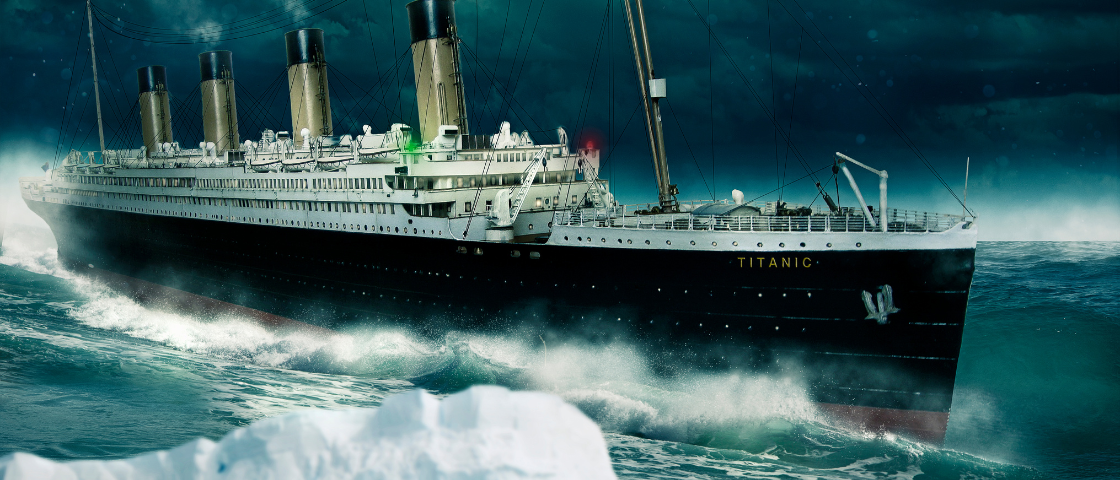Cold Water’s Effects on Decomposition, Part 2: Victims of the Titanic (Seawater) vs. The Edmund Fitzgerald (Freshwater)
A recent Connecting Directors article discussed how Lake Superior’s victims rarely emerge from her frigid depths. The freshwater Great Lake is notorious for “disappearing” her dead: in the infamous example of the 1975 wreck of the Edmund Fitzgerald, rescue boats and beach patrols scoured the region for days after the ship’s disappearance from radar during a storm and while searchers located debris and lifeboats, no survivors or remains were found. None of the sunken ship’s crew ever washed ashore, nor were any bodies discovered on the surface. Decades later, however, during an exploratory dive to the wreck on the seabed 500+ feet down, a crewmember’s body was located on the sandy bottom beside the hull, largely intact, still wearing trousers and a cork life vest.
Does such preservation also occur in the frigid depths of the North Atlantic? Are there still Titanic victims intact in or around the ship?
No bodies of Titanic victims have ever been found
Though Titanic sank in the freezing saltwater of the North Atlantic, it went down under vastly different conditions from the Edmund Fitzgerald. The Fitzgerald sank in fierce November weather amid high seas and erratic winds. The ship, which had at one time been the largest carrier on the Great Lakes, sank so quickly and unexpectedly there had been no time to send an SOS. Monstrous rogue waves are thought to have been responsible. Conversely, the seas at the time of the Titanic’s foundering were calm.
Just because the water is cold and deep doesn’t mean it will preserve the dead. There are a lot of reasons why the bodies of Titanic victims who weren’t found within or around the shipwreck. In cold water of temperatures such as those of Lake Superior, as we have seen, bacterial activity slows dramatically or even ceases — that’s one issue. Another is that dead tissue absorbs the water it’s in, and the rate of absorption depends on the salinity and other features of the chemical profile of the water.
How waterlogged a body becomes depends on other features in both the body and the water it’s in. Are there open wounds on the skin? How heavy is the body? Is it clothed? Weighted down? Water’s acidity and alkalinity also play roles. Further complicating the absorption factor are depth and water pressure: bodies deeply submerged (or resting on the sea floor) may be in highly oxygenated water, which can accelerate the breakdown of tissues. Also, below a certain depth in seawater, bone tissue can dissolve in days (and this is the case for the waters in which the Titanic lies).
So where are Titanic’s bodies? According to the Maritime Museum of the Atlantic, winds and currents quicky scattered many; scavengers took others.
And the deepest part of the sea itself, along with her deep-dwelling creatures, saw to the rest.
How to decompose in water
Those that do remain, to some degree, intact in a watery grave have paused indefinitely the final step of the mortal process.
Putrefaction, despite an unsavory reputation, is an elaborate, in some ways elegant, effervescent chemical state driven by the environment in which it occurs.
In the natural course of putrefaction, advancement of decay relies in large part upon human microbiome bacteria, most notably species of Clostridium, widely present in healthy intestines. Clostridia propagate throughout dead biomass at or around a temperature of 77 Fahrenheit (25 Celsius); submerged remains in waters such as those of Lake Superior (range roughly 30-50 F) or the north Atlantic (affected by currents ranging from 50’s F to below freezing at the ocean floor) – remain at temperatures too low for the enteric system to get the job done with any efficiency.
There’s a romantic notion that human blood is chemically similar to seawater. This isn’t really accurate, but the idea has poetic resonance, especially when considering water’s effects on our mortal remains. Our blood, as the primary essence of life, in its hour, is also ironically the main feature of our own death’s advancement. The bloodstream, even when blood no longer circulates, moves the molecular agents of putrefaction (the thanatomicrobiome) freely throughout the body via our lifeless blood, consuming its proteins and carbohydrates as fuel, propagating destruction to the organs with the greatest blood volume, which then will decay most quickly.
Allowed to decay, our own blood turns on us. Notable, then, that the cleansing power of water includes the power to deny us our own corruption.




